As the global environmental conditions are shaping the world with new rules, it is important to think of cities as places that promote an ecological interaction between the humans who build them and the natural space that still exists outside them. Sant Adrià Agroecological Community is a project that pursues this considering a terrestrial design approach. By terrestrial we assume Bruno Latour’s understanding of the earth as the subject of analysis when we think of the impact that our design decisions may have. By explaining this, we developed a methodology that shaped the project through 5 main topics: contextual opportunities, terrestrial design, community centered program, passive comfort, and self-sufficiency.
Contextual Opportunities.
Considering Spain as the country with the largest organic farming area in the European Union, we expressed this condition as an agroecological project. Also, the need of affordable housing and the current technological advance made us understand the importance of perceiving the housing space as a productive one. Usually, as being part of a complex system of networks inside the city, housing projects are perceived as consuming spaces but if this condition is reversed, housing and industry could generate a new way to afford living. Reshaping the way humans live inside cities must consider also transforming the activities and systems that the habitable spaces allow, and by this contextual opportunity analysis, we decided that agroecology, industry, and housing could coexist in Sant Adrià project.
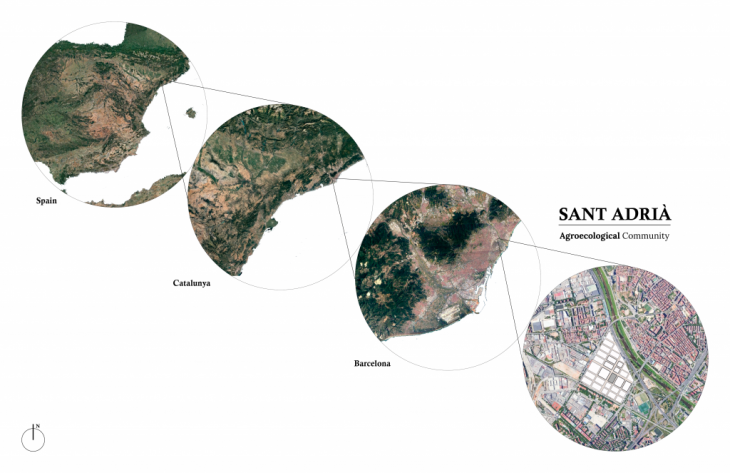
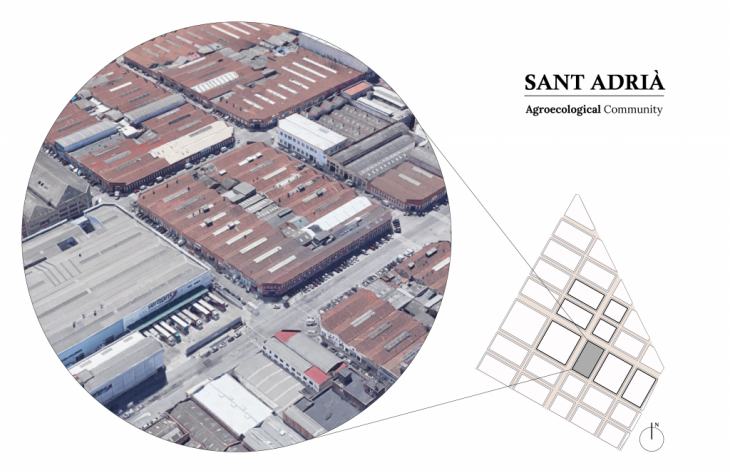
Terrestrial Design
The form was achieved by understanding the environmental conditions and impacts of the project. We started by preserving the ground floor condition that a previous industrial project had. A brick façade will be the envelope of the new industrial and community ground floor, that also will be worked as the access for two housing structures if 160 apartments distributed in 5 levels. The housing structures are inclined according to the cardinal points to maximize the sun caption and let the façades to be treated according to its sun condition. To take advantage of the north winds and consider a passive ventilation inside the buildings, 8 courtyards were created to promote stack effect and cross ventilation inside the structures. Finally, as an agroecological project requires, the agricultural landscape was placed in the entire surface of the project. Greenhouses were distributed all along the rooftops and in the space of transition between industry and housing, an agricultural terrace was disposed.

Community centered
To achieve sustainability, a community centered project will allow the users to find spaces for gathering, learning, and developing its own way of living. Thinking of the project as community placed the commons over the privates. Shared spaces will function as the link between apartments and the program differences. By promoting the interaction between the users, the possibilities to achieve a true sustainable project increase. If the awareness of the others is present the maintenance and evolution of the project could be possible.

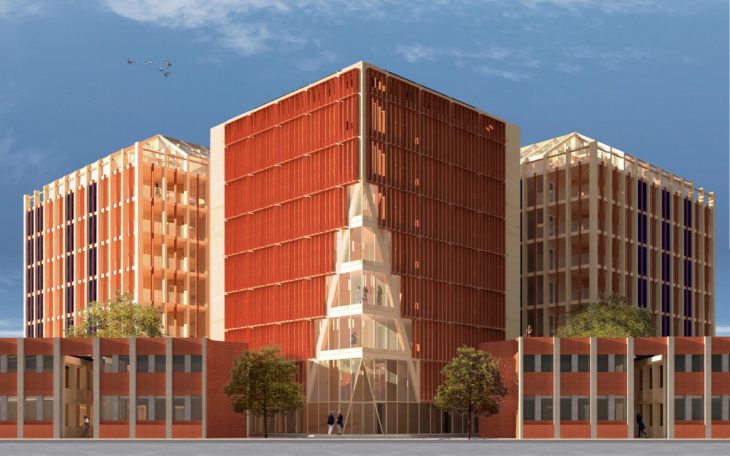
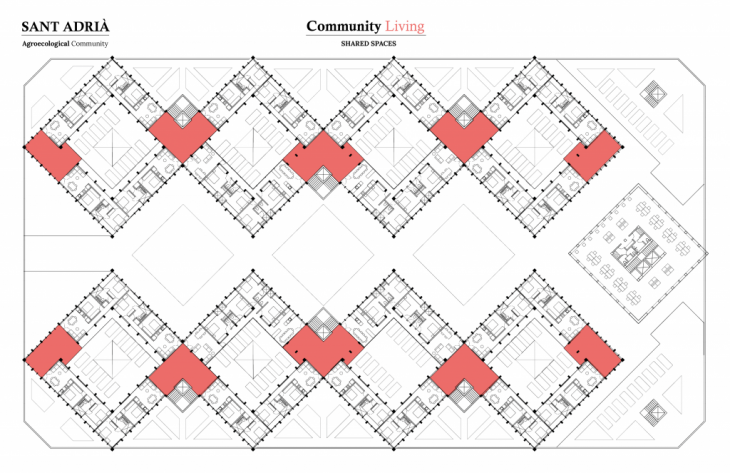

Passive comfort
Comfort and sustainability are constantly placed as opposite concepts. Passive design works as a tool to achieve low environmental impact solutions that regulates the climatic conditions to accomplish human comfort. In Sant Adrià project, wind and sun were analyzed to shaped it. Slim apartments have the possibility to take advantage of cross-ventilation while the disposition of the housing structures creates inner patios that work both for summer and winter conditions. Materiality also plays a huge rol in passivity. The wood structure gives high thermal comfort. Ceramic louvers give shadowing in summer and retain heat on winter. Glass is used to promote stack effect in summer and to contain heat in winter inside the two-layer panels. Concrete in cautiously placed as flooring to preserve the radiant floor heat that works with the industry output. In general, comfort is perceived as climatic wellbeing rather that a consuming facilitation.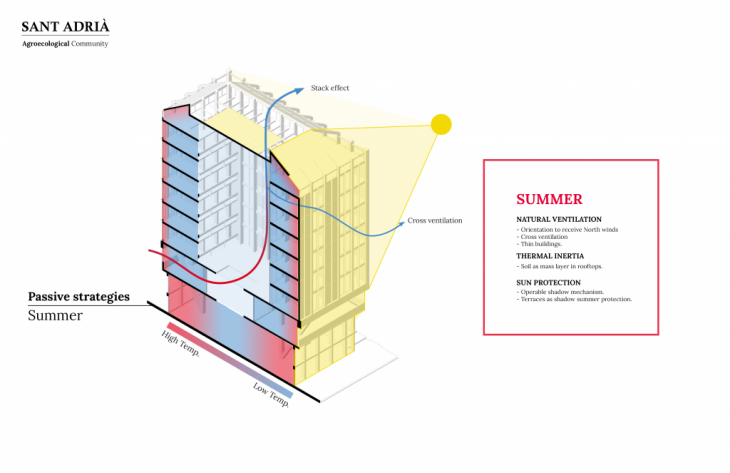
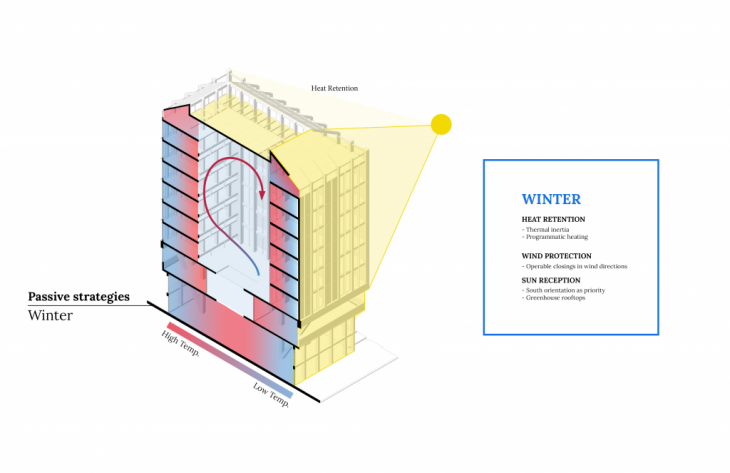
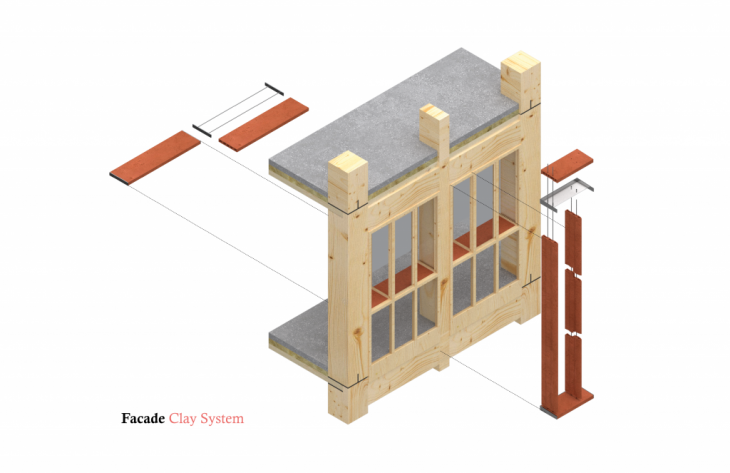 Self-sufficiency
Self-sufficiency
Self-sufficiency is commonly related to satisfying an energetic and water demand within the architectural space. In Sant Adriá project, solar panels, water recycle systems, rain caption and spaces for agricultural production are key elements to a new way of living. The project allows to gather 90.95% of the energy consumed by the residents and can supply the water requirements for the entire agricultural area by treating the gray water and saving the rainwater during the year. Technology is used an awareness tool rather that a consuming entity. We developed a system that measures the electrical consumption and give that data to the entire community, so the users are able to make conscious decisions about their consumption in order to get the free solar energy that the complex generates.
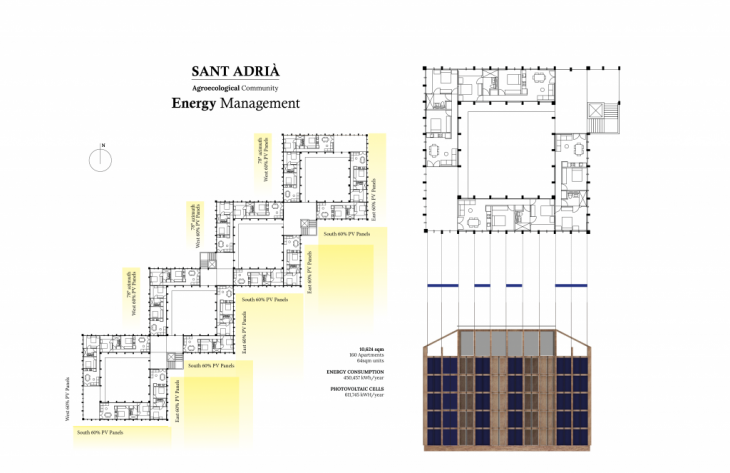
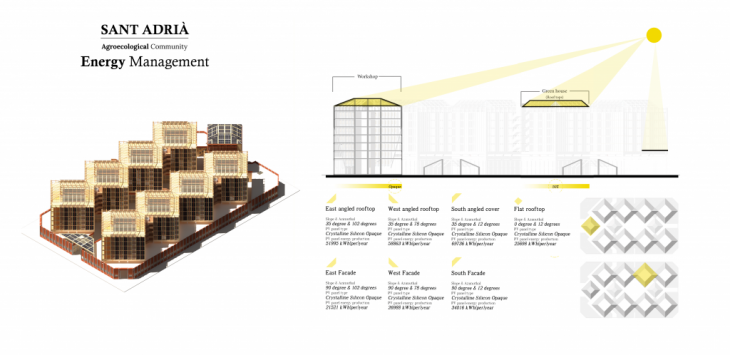
Sant Adrià Agroecological Community is a project of IaaC, Institute for Advanced Architecture of Catalonia developed at Master in Advanced Ecological Buildings in 2020 by:
Students: Ignacio Reyes Solís, Amrithavarshini Prabhuram
Faculty: Vicente Guallart